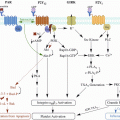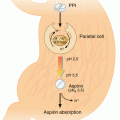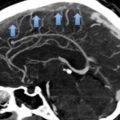© Springer International Publishing Switzerland 2016
Md. Shahidul Islam (ed.)Thrombosis and Embolism: from Research to Clinical PracticeAdvances in Experimental Medicine and Biology90610.1007/5584_2016_102The Use of Surgical Care Improvement Projects in Prevention of Venous Thromboembolism
(1)
Department of General Surgery, Gumussuyu Military Hospital, Istanbul, 34349, Turkey
(2)
Department of General Surgery, Acibadem University, School of Medicine, Istanbul, Turkey
Abstract
Venous thromboembolism (VTE) is a potentially mortal complication in patients undergoing surgery. Deep venous thrombosis and pulmonary embolism can be seen up to 40 % of patients who have no or inappropriate VTE prophylaxis during perioperative period.
In addition to the preoperative and intraoperative preventive measures, the standardization of postoperative care and follow-up are essential to reduce VTE risk. Modern healthcare prioritizes patient’s safety and aims to reduce postoperative morbidity by using standardized protocols. Use of quality improvement projects with well-organized surgical care has an important role to prevent VTE during hospital stay. Present surgical care improvement projects have provided us the opportunity to identify patients who are vulnerable to VTE. Description and introduction of the quality standards for VTE prevention in the educational materials, meetings and at the medical schools will increase the VTE awareness among the health care providers. You are going to find the characteristics of the major surgical quality improvement projects and their relations with VTE in the chapter.
Keywords
World Health Organization (WHO)The Safe Surgery Saves Lives Study GroupA Perioperative Surgical Safety Checklist (WHO-SSC)American College of SurgeonsThe National Surgical Quality Improvement Program (ACS-NSQIP)The Surgical Care Improvement Project (SCIP)The Surgical Patient Safety System (SURPASS)The NICE (National Institute for Health and Care of Excellence) guidelinePrevention of Venous Thromboembolism1 Introduction
Venous thromboembolism (VTE) is a potentially mortal complication in patients undergoing surgery. Deep venous thrombosis (DVT) and pulmonary embolism (PE) can be seen up to 40 % of patients who have no or inappropriate VTE prophylaxis during perioperative period [1]. Thrombosis of the mesenteric and portal venous system may also complicate postoperative course and increase morbidity after surgery [2]. There are patient and disease related features increasing risk of VTE. Cancer, obesity, inflammatory bowel disease, old age, immobility and pelvic surgery are main factors associated with increased risk of VTE [3–7]. Advanced operative techniques and increased clinical experience are the main denominators of reduced perioperative morbidity. Recent reports showed that laparoscopic approach is associated with lower thromboembolic and hemorrhagic complications compared to open surgery [8].
Around 234 million operations are performed in the world annually. Modern healthcare approach prioritizes patient’s safety and aims to reduce postoperative morbidity by using standardized protocols [9]. Perioperative mortality rate varies between 0.4 and 0.8 % and major complications may develop in 3–17 % of patients undergoing any type of surgical operation [10, 11]. Quality improvement projects have enabled to apply best practice parameters into clinical practice. As the most common preventable cause of inpatient death [12], VTE prophylaxis has become one of the major denominators of quality indicators [13]. Therefore overall improvement achieved with quality indicators almost always includes VTE related outcomes.
Patient positioning during surgery, pharmacologic and mechanical VTE prophylaxis, early ambulation, and increased vigilance of the entire health care team are denominators of prevention from VTE. In spite of the current precautions, VTE occurs in up to ten percentage of patients in the field of general surgery [3, 14, 15]. The operative techniques and instruments for patient care should be used in a way that they would be beneficial, easily applicable and cost effective. Development of VTE triggers a chain reaction increasing length of hospital stay, increased cost of care, and mortality [16]. The precautions in surgical care and quality improvement projects have improved perioperative outcomes [17]. “The Safe Surgery Saves Lives Study Group” of the World Health Organization (WHO) published the results of the perioperative surgical safety checklist, WHO-SSC, which has made a significant impact on postoperative complications and reduced major complications from 11 to 7 % such as pulmonary embolism [18]. In addition to the preoperative and intraoperative preventive measures, the standardization of postoperative care and follow-up are essential to reduce VTE risk. Majority of surgical complications and errors occur outside the operating room [19–21]. Importance of quality improvement projects standardizing all perioperative care has been well realized among the surgical societies. Major quality improvement programs are the WHO-SSC, the American College of Surgeons – the National Surgical Quality Improvement Program (ACS-NSQIP), the Surgical Care Improvement Project (SCIP), the Surgical Patient Safety System (SURPASS) and the NICE (National Institute for Health and Care of Excellence) guideline [19–21].
2 The World Health Organization Surgical Safety Checklist
The WHO published a safety checklist including multiple recommendations to secure patients’ safety during perioperative period and to reduce rates of surgical errors [18]. First version of the WHO-SSC contains 19 items. The WHO-SSC mainly focuses on perioperative incidents occur in the operating room before induction of anesthesia, before skin incision, and before the patient leaves the operating room. Before the anesthesia induction, patient’s identify and procedure type is confirmed, operation site is marked, any known allergies are documented and risk of massive blood loss are determined. Required back-up strategies are planned at this level based on the risks identified. Patient’s name, procedure type is reconfirmed, any anticipated critical events are announced and all the operating room staff is introduced before skin incision. The circulating nurse must verbally confirm the operation performed, completion of correct instrument and sponge counts, and appropriate specimen labeling before patient’s leaving from the operating room.
The complication and mortality rates were significantly improved by using WHO-SSC [22, 23]. WHO-SSC reduced surgical-site infections development, reoperation requirement, and overall complications rates regardless of case characteristics and caseload of the healthcare center. It has been proposed that use of the checklists promotes healthcare providers to apply required measures and motivates all caregivers to act as a team. Having a checklist in front of the personnel in the operation room may significantly increase focusing on application of required medication in a timely manner, patient monitorization during surgery and management of operative instrument and materials. WHO-SSC has not been used universally and there are limited data about the impact of WHO-SSC on VTE related outcomes. We believe using a well-designed checklist and applying it in all required patients would reduce VTE risk.
3 The American College of Surgeons National Surgical Quality Improvement Program
The ACS-NSQIP has been planned in the mid-1980s as a government project of the US to improve surgical outcomes more than a hundred Veterans Administration (VA) hospitals which had high-rates of mortality and surgical complications [24]. This attempt showed the need for a risk-adjusted prospectively maintained nationwide database for surgical outcomes. Therefore the legislative act provided for the development of a risk-adjustment model that would take into account the severity of a patient’s illness and thus enable more reliable comparisons of results from participating health centers. Following the National VA Surgical Risk Study conducted by the Department of Veterans Affairs between October 1st, 1991, and December 31st, 1993, parameters of risk adjustment were determined and the VA-NSQIP allowing risk-adjusted comparison of the VA hospitals was created in 1994 [25, 26]. This was constituted the birth of the ACS-NSQIP. The participation of the all VA hospitals was mandatory for the historical study. The program had been very successful, mortality and morbidity in the VA system was reduced to 27 % and 45 %, respectively. This quality improvement study has become the pilot study for the ACS NSQIP in a small number of academic medical centers and private hospitals [25]. In 2004, the ACS-NSQIP was initiated at the nationwide level and was designed to measure risk-adjusted outcomes of surgical interventions so as to compare results between hospitals [27]. This is achieved with a validated risk adjustment using a logistic regression model. This risk adjustment allows unbiased comparison of results between hospitals of different sizes serving different patient populations [28, 29]. Currently there are over 350 hospitals in the US and the Middle East are in the ACS-NSQIP.
The ACS-NSQIP has more than 130 variables of which numbers are increasing gradually. The ACS-NSQIP is one of the first national, validated, risk-adjusted, outcomes-based databases was created to evaluate the quality of care during perioperative and short-term (30-day) postoperative period. Trained personnel collect the data prospectively. Each hospital submits an average of 1600 major operations annually to the ACS-NSQIP. The variables are collected from the following categories; demographics, surgical profile, preoperative, intraoperative and postoperative outcomes. While there were nine categories of complications including overall mortality, overall complications, cardiac complications, postoperative pneumonia, intubations required within 48 h post-surgery (>48-h intubations), unplanned intubations, pulmonary embolism and deep venous thrombosis, renal dysfunction and surgical-site infections had been reported; the parameters of the complications have been widened in the main dataset and a targeted datasets are added in last 2 years for specific type of operations such as colectomy. During the data abstraction, trained clinical nurses use well-determined, precise definitions for each parameter of the ACS-NSQIP. A comprehensive set of clinical and laboratory risk factors are assessed in every patient, and submitted data are externally audited to ensure their completeness and accuracy [30]. A well-validated risk-adjustment models gets the data from the registry randomly. Participating hospitals receive robust, risk-adjusted surgical outcomes, expressed relative to other hospitals as “observed to expected” (O/E) ratios. An O/E ratio <1 indicates that the hospital is performing better than expected or an O/E ratio >1 indicates that the hospital is performing poorer than expected. The comorbidities of their patient population and surgical case complexity are considered during the assessment (i.e., an O/E mortality ratio <1 means that fewer deaths occurred than anticipated in comparison with peer hospital performance). These biannual reports are blinded, allowing participating centers to compare their risk profiles and outcomes with those of peer medical centers and national averages [30]. Multiple studies have validated that institutions can improve their outcomes by directing performance improvement initiatives in areas where they seem to be outliers [31–33]. The ACS-NSQIP is not only documenting the VTE rates, it also allows us the perform risk analyses for VTE and enables to identify factors associated with high VTE risk in different operative setting and different type of patient populations [34]. Inflammatory bowel disease, emergent admission, open procedures, and stage 4 cancer patients have increased risk of DVT in setting of colorectal surgery [34, 35].
Even it is rare to develop VTE; obesity, inpatient status, venous catheterization, prolonged operative time, and immediate reconstruction were found to be independent risk factors for VTE [36]. The ACS-NSQIP outcomes allow us to determine the risk groups for VTE development.
4 The Surgical Care Improvement Project
The SCIP builds on the upgraded version of the Surgical Infection Prevention (SIP) project, which was created to reduce surgical site infections by promoting appropriate timing and selection of prophylactic antibiotics [37]. The SIP project, implemented by the Centers for Medicare and Medicaid Services (CMS) and the Centers for Disease Control and Prevention (CDC) in August of 2002, grew out of the CDC’s extensive experience in surveillance of surgical site infections through the National Nosocomial Infection Surveillance system and in quality improvement and performance measurement [37].
The SCIP partner organizations coordinate their efforts through a steering committee including representatives from the American Hospital Association, American College of Surgeons, American Society of Anesthesiologists, Association of Registered Nurses, Joint Commission, Institute for Healthcare Improvement, Department of Veterans Affairs, Agency for Healthcare Research and Quality, CMS, and CDC [37]. There were three technical expert panels on infection, cardiac risk, and venous thromboembolism. Every panel has members from professional organizations, academic institutions, and government agencies to supplement the expertise of the partners. The expert panels ensure that SCIP quality measures are supported by evidence-based research. Partners in the SCIP point out that a remarkable reduction in surgical complications depends on surgeons, anesthesiologists, perioperative nurses, pharmacists, infection control professionals, and hospital executives. Teamwork is required for making surgical care improvement a priority. The motivation for the improvement of quality of care should be an organizational culture enabling collaborations among the healthcare centers. The SCIP quality measures include 10 quality parameters for prevention of postoperative complications from infection, myocardial ischemia and venous thromboembolism. The CMS has endorsed the SCIP for providing better quality of care. In general surgery, the SCIP recommendations for VTE prophylaxis include both mechanical and pharmacologic prophylaxis for all patients, unless there is a contraindication. VTE preventative measures must be ordered in patients who meets the VTE-1 (Surgery patients with recommended venous thromboembolism prophylaxis ordered) criterion and must be administered based on VTE-2 (Surgery patients who received appropriate venous thromboembolism prophylaxis within 24 h prior to surgery to 24 h after surgery) criterion.
Stay updated, free articles. Join our Telegram channel

Full access? Get Clinical Tree







